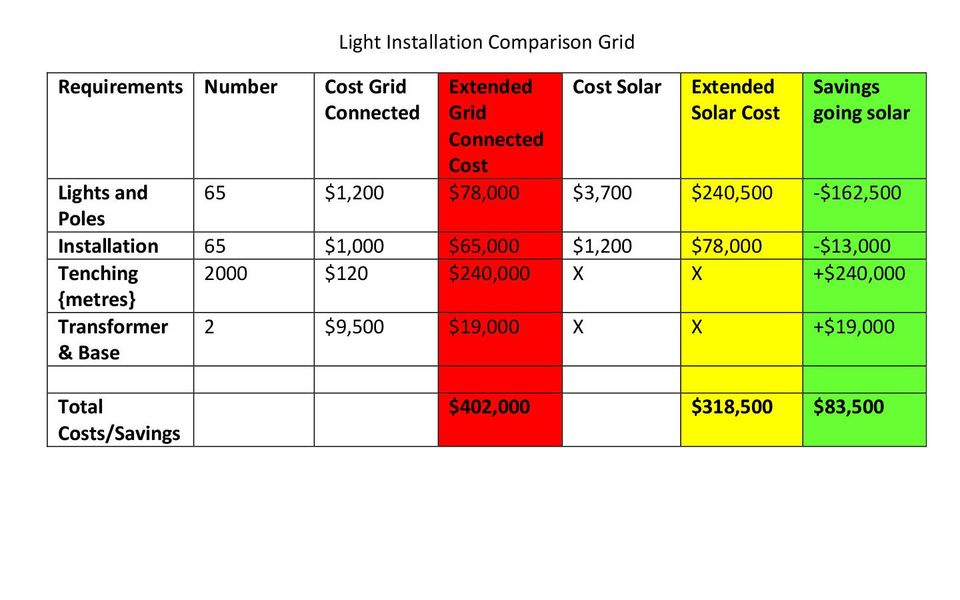The costs of traditional street lighting are often more than simply installing solar street lights.
Cost of Solar vs Conventional Street Lighting
January 2, 2020
Installation of traditional street lighting means having to access the electrical grid.
For new developments and/or upgrades to unsightly above ground powerline areas, or where additional lighting is required, this means trenching and underground wiring.
This is a process that is lengthy, expensive, and creates inconvenience to surrounding neighbours, commuters and road users.
In fact, the costs associated with underground wiring, on-site transformers and electrical enclosures are often more
than simply installing solar street lights.
Whether installing new solar lighting to previously poorly or unlit areas, or converting traditional street lights to solar street lighting systems, you eliminate the ongoing increasing costs of electricity.
Further, you never have the issues created by blackouts or brownouts to the power grid – you will always have light at night!
You can see the savings in this simple grid below, which is an example of a 2 kilometre stretch of road based on typical costs for ideal soil conditions {for trenching} {note that rates for trenching will be higher in locations that have difficult soil conditions}.
| Regular Street Light | Luma Exit 90W Integrated Solar Street Light |
|---|---|
| 400W Halogen or Similar | 90W Ultra High Efficiency LED {2 x 50W LED} |
| 9,000 Lumens | 10,000 Lumens |
| 30 ? 50 Lumen / Watt | 100+ Lumen / Watt |
| No Back Up Power Source | Internal Battery {3 nights reserve power} |
| No Solar Array | Integrated Solar Array |
| Requires Electricity | Solar Powered |
| Works only when power grid is energised | Works whenever dark including during power outages |
| Requires cabling which requires expensive trenching | No Cabling Required |
| Additional wiring in the ground | No wiring required |
| Wire required in Pole | No wiring required |
| Significant resources to install | Simple Install ? 2 men and cherry picker |
| Special Crews for safe installation and commission | Safe to install ? 12 volt |
| Attracts insects | Does not attract insects |






